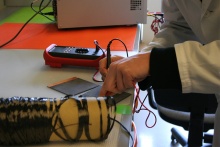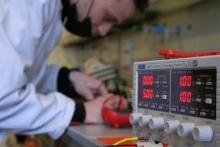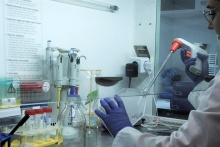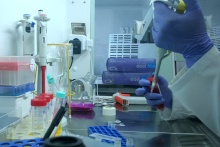Date added: 2022-09-23
New groundbreaking system for removal of contaminants in water
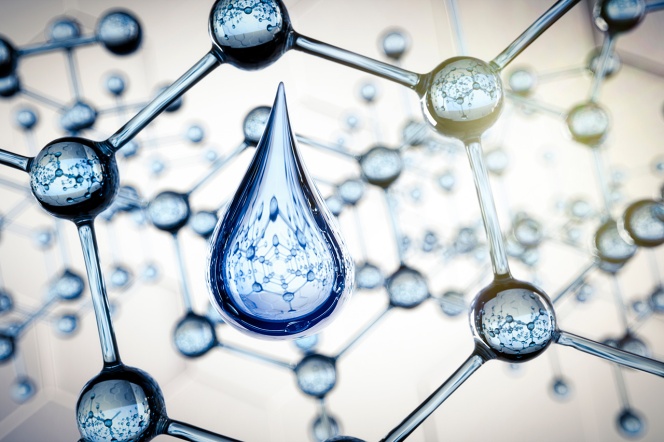
Within the scope of the international i-Clare project, at Gdańsk University of Technology managed by Robert Bogdanowicz, DSc(Eng), professor at the Faculty of Electronics, Telecommunications and Informatics, it is planned to develop a new digital water treatment technology that may allow cities to adapt better to climate change. The system, which the interdisciplinary research team is working on, is to identify and adjust the most effective operating parameters in order to neutralize harmful organic pollutants dissolved in water. The researchers will analyze ten substances from various groups, such as pharmaceuticals, pesticides, and dioxins, which are present in rainwater and domestic sewage, including compound 6PPD.
– We focus on the oxidation of compounds that pose the biggest problem according to the indications of the European Commission, and on the processes related to their decomposition – explains Prof. Bogdanowicz. - We plan to develop a model in which we will introduce advanced analytical techniques, based on different concentrations of specific compounds – says Prof. Bogdanowicz.
Low-cost carbon-based electrodes
Researchers from Gdańsk University of Technology are working, among others, on low-cost carbon electrodes, which will be the base for the electrolyzer, the core of the entire system.
– Our electrodes look like a sponge, but simultaneously are conductive materials. Oxidation and decomposition processes take place on their surface – explains Prof. Bogdanowicz.
Currently, prototype electrodes are tested in various configurations. We build a so-called artificial drain with different concentrations of pollutants, and researchers test particular systems on it. The final demonstrator will be field tested.
Tens of liters per hour
The technology developed in the project is to allow for higher scalability in relation to the capacity of currently available solutions of this type.
– Still, the system capacity will not be hectoliters per hour, but it will be at the level of tens of liters, which is sufficient for dangerous compounds – assures Prof. Bogdanowicz.
Algorithm that determines the conditions needed to neutralize the pollutants
The research team aims at obtaining high energy efficiency of the solution.
– Operation of the system at a higher current intensity, depending on the type of compound to be removed, is not always cost effective in terms of process costs. High power does not always translate into an increase in the efficiency of electro-oxidation, but it can contribute to faster degradation of electrode materials during the operation of the device. Based on machine learning, we are trying to teach the system optimal conditions from the point of view of, for example, the rate of oxidation and other parameters – says Prof. Jacek Ryl from the Faculty of Applied Physics and Mathematics, from the research team – The algorithm will allow to determine what conditions will be sufficient to neutralize specific, dangerous substances – he adds.
Multiple applications of one solution
As emphasized by the researchers, potential users of the solution could be, for example, municipal waste water treatment plants or developers obliged to control retention.
– On the one hand, we are developing a technology for water and wastewater treatment, but also the electrolyzer tool itself can have many other applications, very important for the development of environmental protection technologies. After adjusting the system, it is possible to e.g. produce hydrogen or reduce carbon dioxide through an electrochemical process. There can be many more applications when considering the measuring tool itself – adds Prof. Ryl.
The researchers from Gdańsk University of Technology cooperate on that project with specialists from the Institute of Biotechnology and Molecular Medicine in Gdańsk (leader) and Norwegian Institute for Air Research. SensDX is the industrial partner. The project is financed by the Norwegian Financial Mechanism for 2014-2021 ("Applied Research" program) and from the state budget. Funding for Gdańsk Tech amounts to over PLN 1.48 million. The estimated total cost of the project is over PLN 6.48 million.


